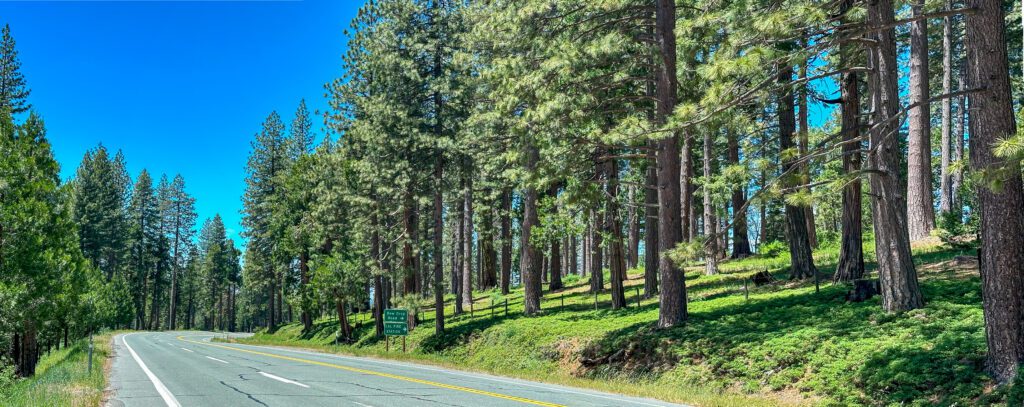
This past year the Sierra Nevada Conservancy (SNC) marked the completion of the View 88 Fuel Reduction and Prescribed Fire Readiness Project (View 88), a Proposition 68-funded grant from the SNC to the Calaveras Healthy Impact Product Solutions, to protect communities and natural resources along Highway 88.
Scenic Highway 88 runs east to west through the Eldorado National Forest (ENF) on top and alongside the ridges that separate the Mokelumne and Consumnes River watersheds in Amador County. It connects Stockton to the scenic high country of Carson Pass, and the rural mountain communities along its route to each other, and the outside world.
Like many parts of California’s Sierra-Cascade, this ecologically rich and beautiful landscape is at high risk from damaging wildfires. Fortunately, Highway 88’s unique and beautiful geography also makes it an ideal location for a strategic fuel break. Treating forestland along each side of this ridgetop highway, to recreate the more resilient forest structures that evolved when natural ignitions and tribal stewardship practices shaped Sierra-Cascade forests, is key to protecting two watersheds and numerous mountain towns.
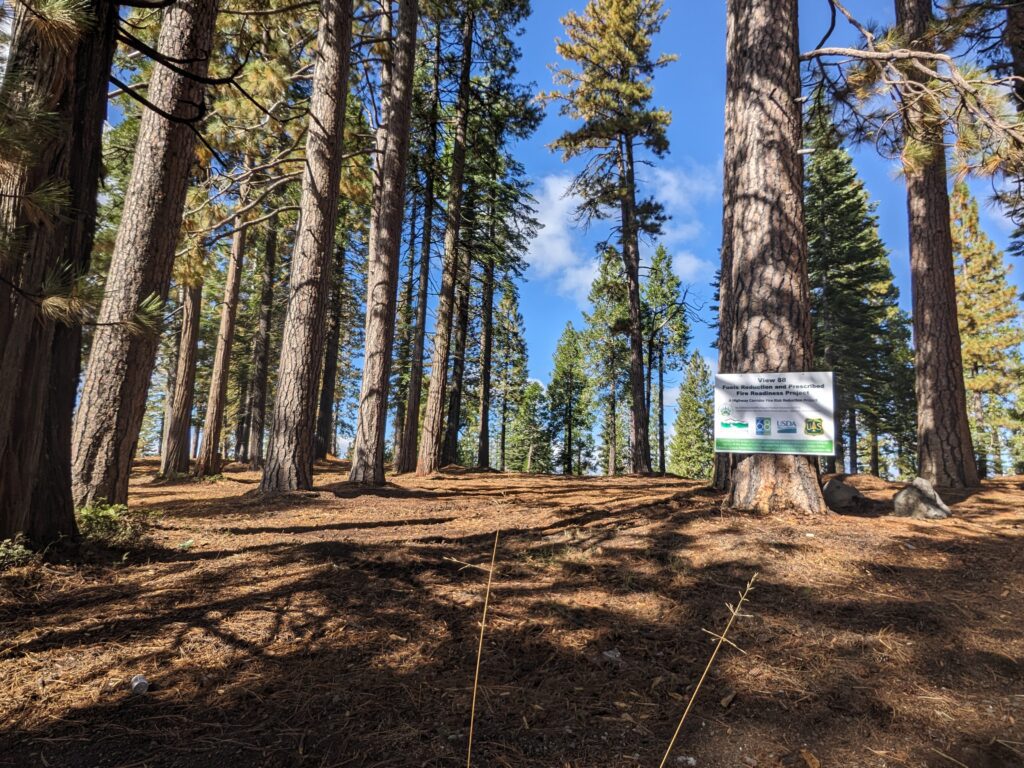
Now complete, the fuel break project works by providing firefighters a place to catch roadside ignitions before they spread, and to make a stand to prevent a larger wildfire from spreading from one watershed to the next. For local communities, less extreme fire behavior due to the reduced fuel loads means safer evacuation routes for residents fleeing danger and better access for firefighters to protect homes and businesses.
Regional collaboration amplifies forest health impacts
The View 88 project begins in eastern Amador County about five miles from the town of Pioneer and includes a 40-mile strip of ENF lands climbing up into the Sierra Nevada high-country. The fuel treatments were designed by ENF staff to decrease surface fuels and modify the vegetation structure at vital locations along ridge tops and upper slopes to reduce the likelihood of high-intensity wildfire in the future.
“A few years ago, there was a tremendous amount of blow down and forest debris accumulated from storms along the Highway,” remembers Jill Micheau, View 88 grant manager. “This project was able to move forward and now it looks beautiful, like a park!”
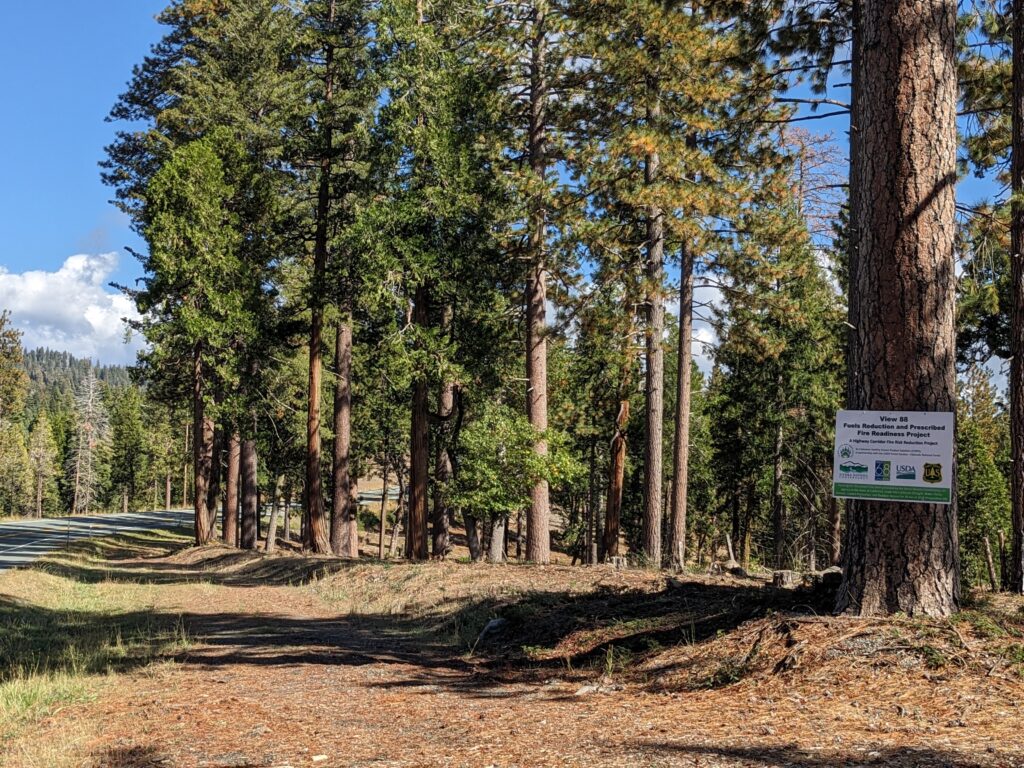
View 88 ties into several other nearby fuel-reduction projects, including the Tiger Creek Fuel Break, a Proposition 1 funded grant from the SNC to the Amador County Fire Safe Council. This synergistic approach to project planning and prioritization is spearheaded by members of the Amador-Calaveras Consensus Group, a successful regional forest collaborative that convenes a broad range of stakeholders to advance holistic, landscape-scale forest and watershed health and resilience. Crucial to achieving forest and watershed restoration on a scale that meets the magnitude of the megafires plaguing our state in recent years, is the capacity to maintain a perspective that considers the broader landscape, while simultaneously implementing critical local projects.
“View 88 is a good, worthwhile project. It accomplished the intended goals, and more acres were treated than the project set out to,” Michael Pickard, SNC South Central Subregion Representative reflects. “The local communities up and down Highway 88 are excited, because it looks great, and they are safer as a result. Overall, a very successful project.”
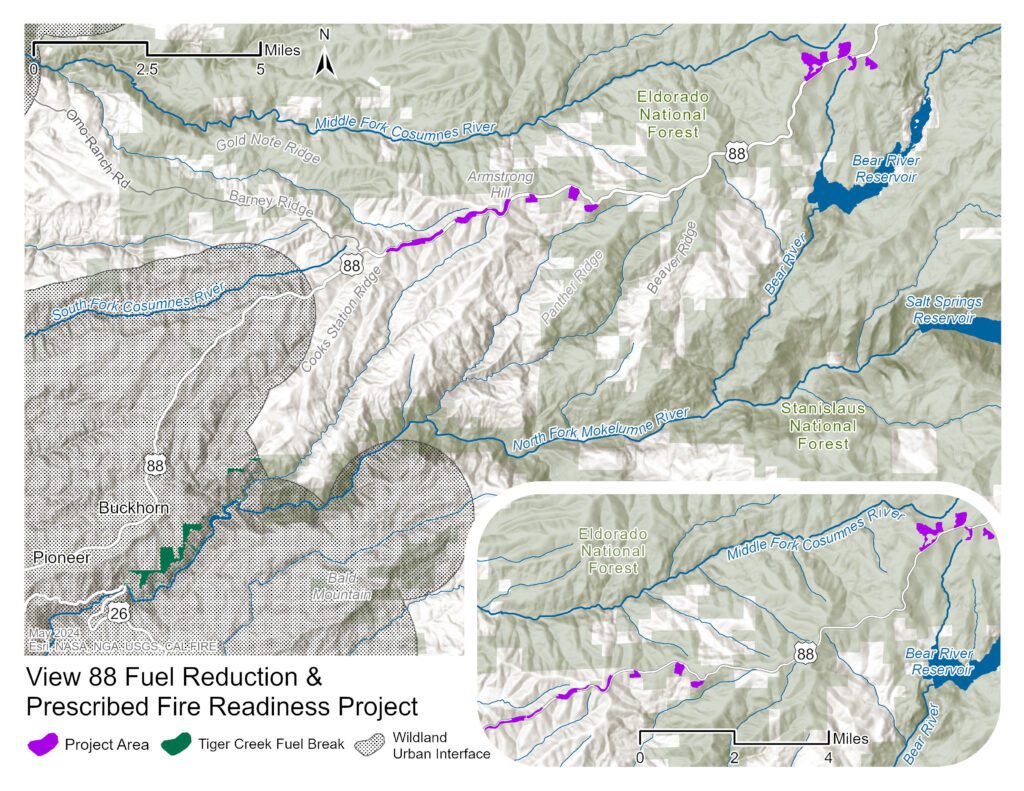
Supporting the local workforce and strengthening rural economies
Implementation of the View 88 project was led by Calaveras Healthy Impact Product Solutions (CHIPS), a nonprofit operating in Amador and Calaveras counties with the mission to improve the local economy and put local, at-risk youth to work on promoting sustainable forest stewardship.
True to its values, CHIPS employed an exclusively local workforce to complete this critical work. The hand thinning was done by the CHIPS Washoe crew, on the eastern end of the project area. Beyond that, it went through a tremendous effort to find and hire two local contracting crews to complete the necessary mechanical work. Utilizing the local workforce is incredibly important to support and strengthen the economy in rural mountain communities, and thereby improving the economic and social well-being of the Sierra-Cascade region, essential to SNC’s triple bottom line mission.
The local crews worked in close partnership with the ENF in the Amador Ranger District, which provided planning and environmental compliance support. This crucial fuel break will be maintained by ENF staff using prescribed fire. Maintenance of forest health projects can often be challenging for local organizations due to limited resources. The fact that this need will be met by the U.S. Forest Service is a key element to the long-term success of View 88, and demonstrates an effective partnership between federal, state, and local nonprofit partners.
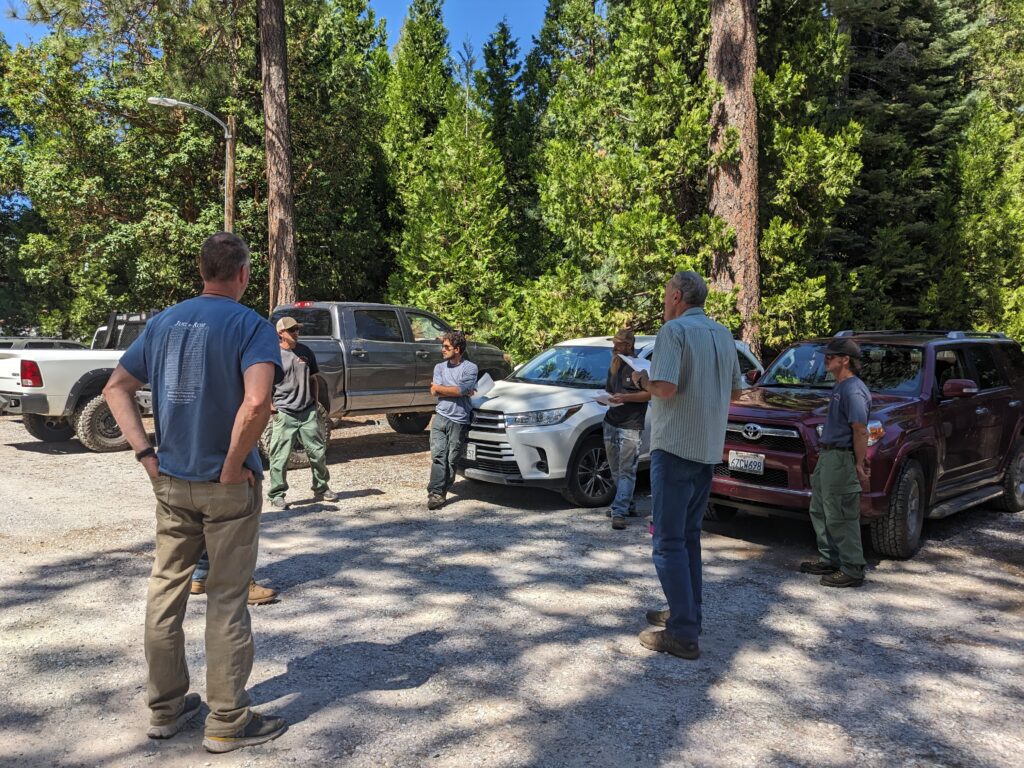
A nature-based solution to a host of climate problems
Beyond the, perhaps more obvious, benefits of community wildfire protection, View 88 provides a nature-based solution to a wide range of challenges created by past management decisions and a changing climate. Nature-based solutions are simply those that apply sustainable management strategies to natural lands to address a wide range of environmental and societal challenges. Examples include restoring processes that naturally remove carbon from the atmosphere and store it securely, or improving the quality, timing, and amount of water flowing from mountain watersheds into the state’s water supply. In the vast, forested Sierra-Cascade, this typically means restoring forests to healthy, functional ecosystems.
View 88 accomplished this very thing through forest-health-thinning practices that removed smaller trees and hazardous ground fuels, leaving larger, more mature trees to sequester and store carbon. Overly dense forests result in too many trees competing for limited water and nutrients, reducing carbon sequestration and storage potential. Additionally, these conditions pose a huge wildfire risk. These are factors that have shifted California’s forest lands from a net carbon sink to a carbon source, as found in California’s 2022 Scoping Plan. View 88 protects the vast amount of carbon stored in large, resilient trees and the soil they are sustained by, as well as increases their capacity to absorb more carbon in the future.
The View 88 project demonstrates how the flexibility inherent in bond funding for climate-resilience efforts allows for multiple benefits to be achieved on the landscape and in our communities. As a result of this project, the communities and natural resources along Highway 88 are safer, healthier, and more resilient. The effective partnership between the SNC, the ENF, and CHIPS was able to utilize Proposition 68 funding to achieve multiple benefits for Californians and our environment.
